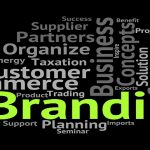Ben & Jerry’s – an example of how to integrate sustainability in business
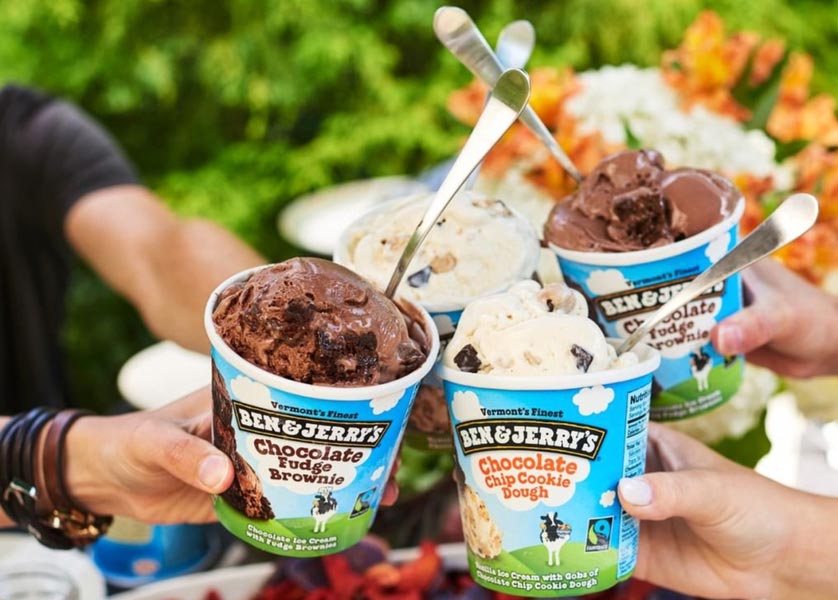
The general definition of sustainability means meeting current needs, without compromising the ability of future generations to meet their own. The concept is holistic and developed around three pillars: the environment, economy and society.
Its impact and relevance spread quickly from individual values, to organizational and governmental agendas. A sustainable business does not focus solely on profit, but also on its social, environmental and economic impact.
Sustainability became a buzz word in the business environment because beside tackling global challenges, it can lead to business success. There are multiple advantages to a long-term ethical decision-making process.
For example, if there is a drop in energy usage, the amount of waste and pollution can be reduced significantly. Moreover, sustainable business practices can yield corporate profit because operational costs are cut and productivity improved, due to the conservation of resources and optimization of processes. All these actions bear positive impact on a brand’s image and can represent a competitive advantage.
Consumers favor companies that focus on giving back to the community and environment. In addition to this, being associated with or working in an environment concerned with doing good will attract employees & investors, and strengthen the relationship with one’s stakeholders.
Ben & Jerry’s understood the importance of leading with purpose and now, the organization is an example of how to correctly apply sustainability in the business environment. As it is stated in their 2018 Social and Environmental Assessment Report (SEAR), the company pioneered a new approach to business, called value-led business, which is organized under a linked prosperity model.
The foundation for this model lies in the integration of societal concerns and the advancement of progressive social change. Basically, it suggests that all the three elements – the individual, the community and the planet, are linked between each other and if the individual benefits, the community benefits, resulting in a benevolent cycle.
This sustainable corporate concept operates within a mission that connects three interrelated parts, aiming to create a prosperous link between all the parties involved in the business process: suppliers, employees, farmers, franchises, customers and neighbors alike.
The model proved to be the right instrument for creating a thriving, sustainable business. As reported in the 2018 SEAR, their positive impact around the world was amplified considerably.
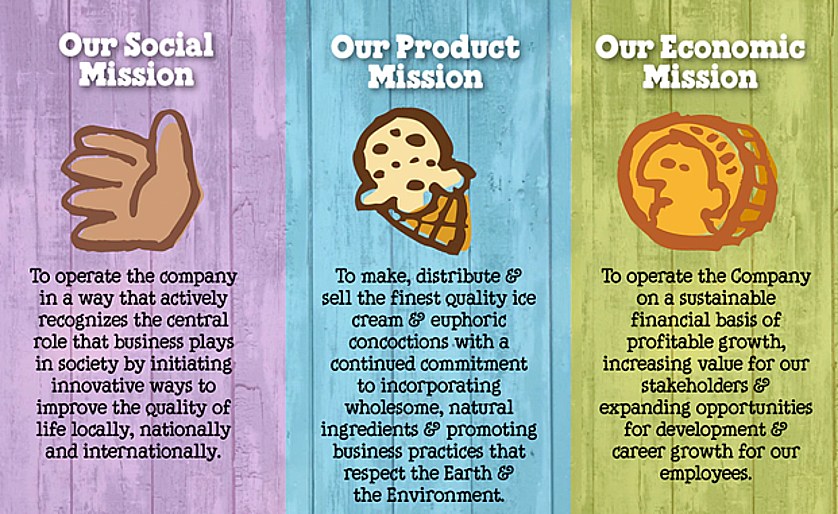
In order to understand how to properly integrate sustainability in one’s business model, let’s have a look at this company’s social mission. It is constructed based on three interconnected core values – Human Rights & Dignity, Social & Economic Justice and Environmental Protection, Restoration & Regeneration.
The actions triggered by the social mission are concentrated around four major areas: Equity, Dairy, Fairtrade and Climate.
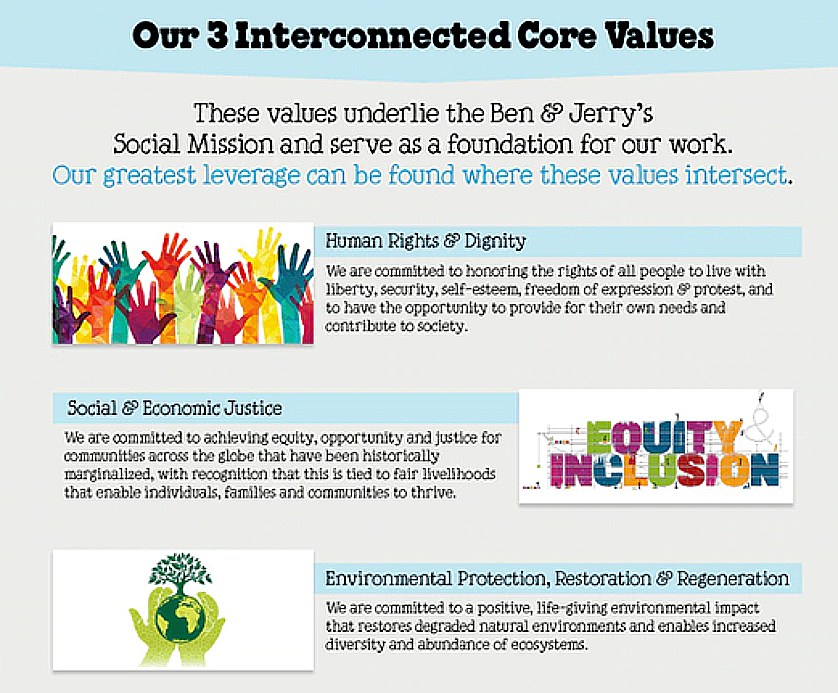
Let us take things one step further and analyze the company’s activity in the Fairtrade field, given that it is a relevant case on how business and sustainability can help each other.
It all started with a partnership between the Ben & Jerry’s organization and Fairtrade, in order to support farming cooperatives with trade, not aid. The initial scope was to create good synergy for building and advancing Living Income, across the Fairtrade network.
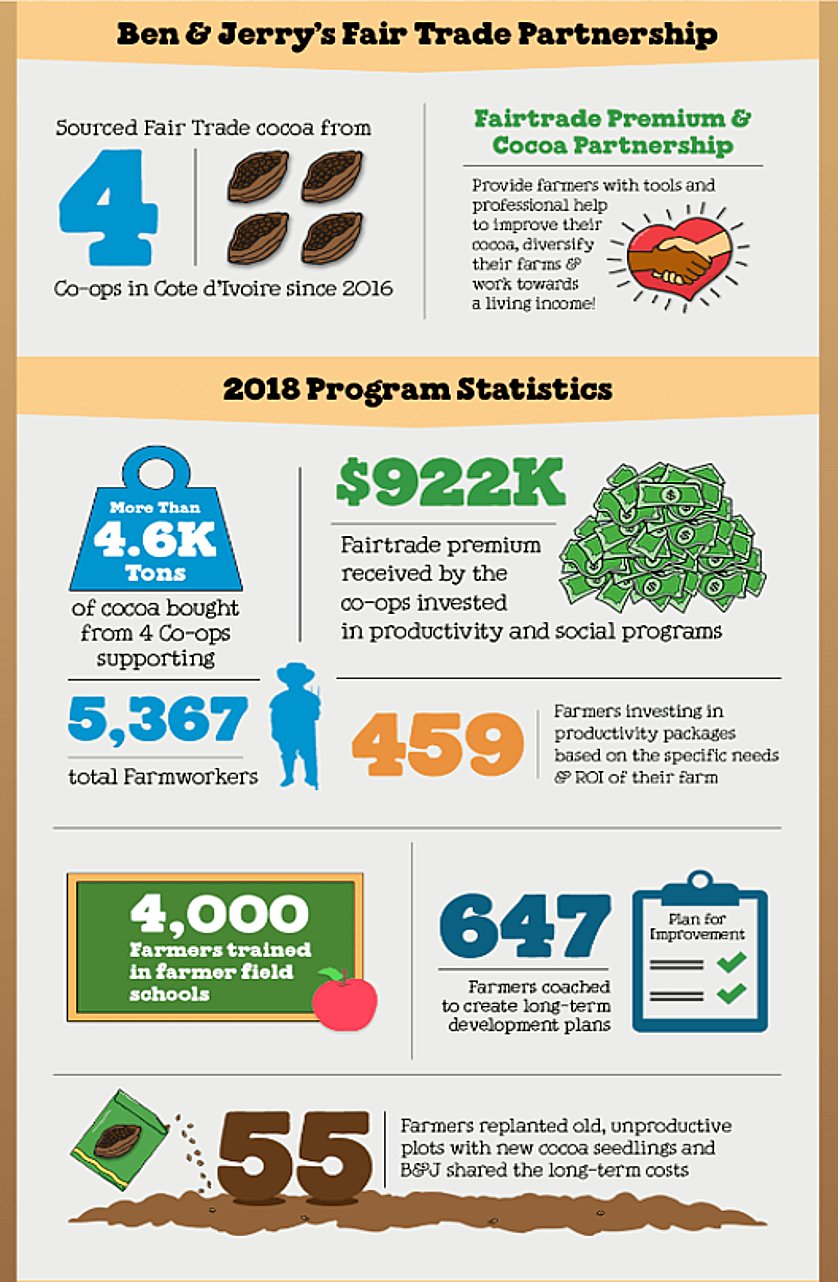
Since that proved to be a roaring success, they later developed the Producer Development Initiative (PDI), which aimed to generate deeper commitments to farmers. The initiative functions according to a “3×3 strategy”, covering 5 ingredients: sugar, vanilla, cocoa, coffee and almonds.
According to the SEAR 2018, the plan for each commodity is to partner through the supply chain, with specific Fairtrade cooperatives, in a linked prosperity relationship. The purpose is to properly acknowledge the gap between the living income and current incomes, and to contribute to closing the gap.
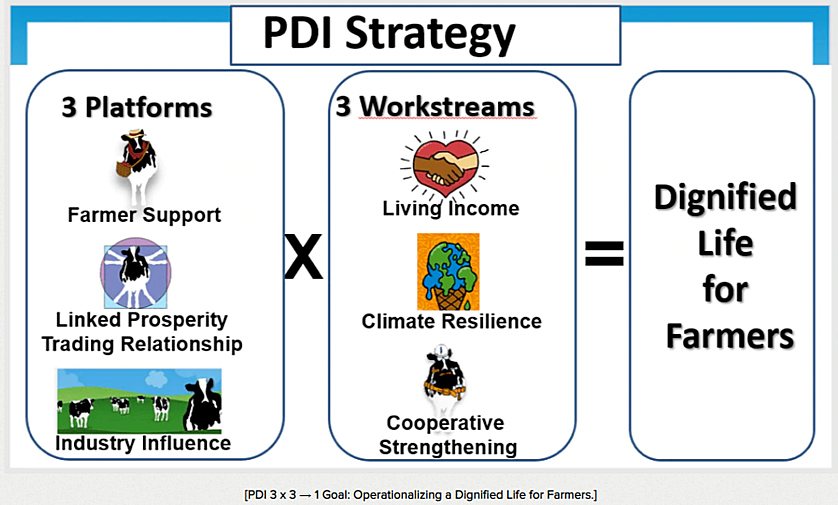
If we were to take a look at the results in the Fairtrade field, these are very encouraging. One of the latest SEAR (2018) report highlights shows that $922,000 were allocated through the Fairtrade premium co-ops, supporting productivity and social programs, with more than 4,600 tons of cocoa having been brought from 4 co-ops, subsidizing 5,367 farm workers.
Moreover, many farmers received training and support in developing their business, so as to better understand the inner workings of what is essentially their company. Given that sustainability requires long-term planning, Ben & Jerry’s came up with a plan for 2019-2020, centered on linking prosperity with small-holder farmers, which is meant to strengthen cooperation, raise living incomes and build climate resilience.
Being sustainable and ethical is paramount to remaining a relevant and competitive organization. Ben & Jerry’s is a good example of how empowering all the parts involved in the business process will ultimately empower the company.
If the environment in which your organization operates is prosperous, the entire company will follow suit. Stakeholders, investors, consumers and employees appreciate a sustainable behavior, and are more prone to associate themselves with it. So, think big, don’t limit your vision to profitability and consider the long-term impact of what your business can bring.
Image sources:

Tags: Business Strategy, Organizational Performance, Sustainability performance, Values




